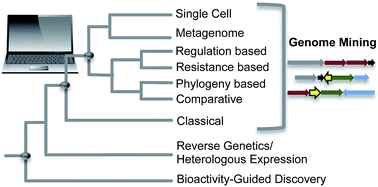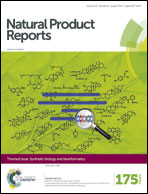The evolution of genome mining in microbes – a review
Abstract
Covering: 2006 to 2016
The computational mining of genomes has become an important part in the discovery of novel natural products as drug leads. Thousands of bacterial genome sequences are publically available these days containing an even larger number and diversity of secondary metabolite gene clusters that await linkage to their encoded natural products. With the development of high-throughput sequencing methods and the wealth of DNA data available, a variety of genome mining methods and tools have been developed to guide discovery and characterisation of these compounds. This article reviews the development of these computational approaches during the last decade and shows how the revolution of next generation sequencing methods has led to an evolution of various genome mining approaches, techniques and tools. After a short introduction and brief overview of important milestones, this article will focus on the different approaches of mining genomes for secondary metabolites, from detecting biosynthetic genes to resistance based methods and “evo-mining” strategies including a short evaluation of the impact of the development of genome mining methods and tools on the field of natural products and microbial ecology.

- This article is part of the themed collection: Synthetic Biology and Bioinformatics

 Please wait while we load your content...
Please wait while we load your content...